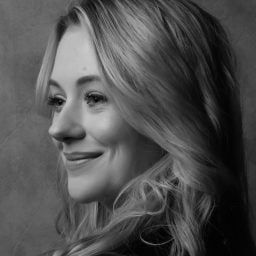Art & Exhibitions
Egypt’s Pyramids of Giza Are the Breathtaking Backdrop for a New Contemporary Art Installation
'Forever Is Now' is on view at the Pyramids of Giza through November 16.
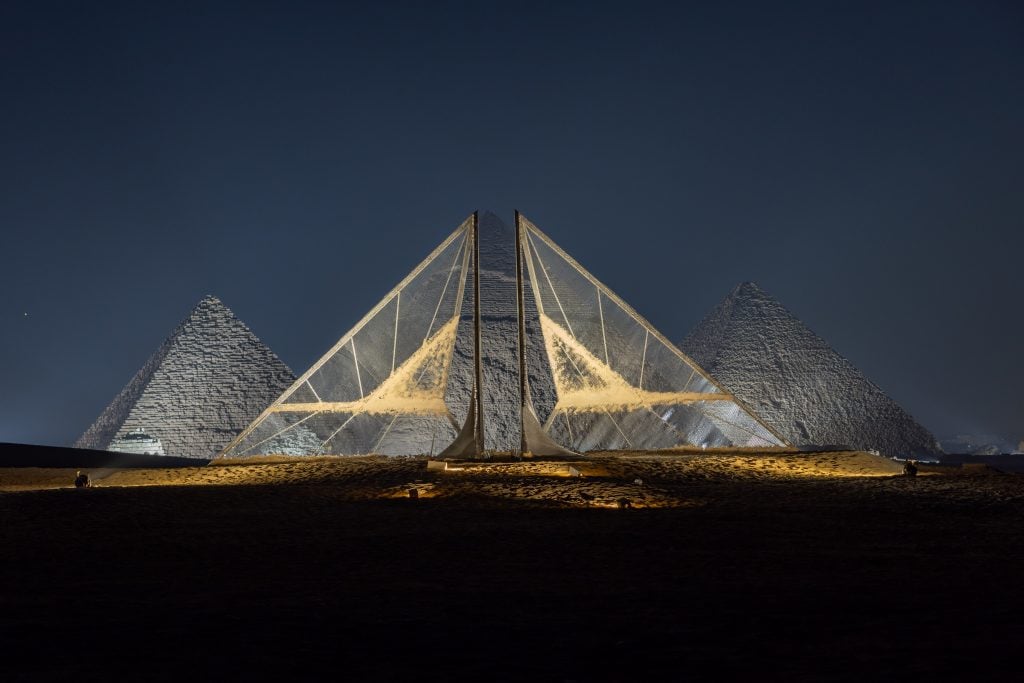
The annual Forever Is Now exhibition, curated by CulturVator and Art D’Egypte, aims to blur the lines between past and present, inviting visitors to explore artworks that look to the intersections between ancient history and modern day creativity. Set against the backdrop of the Pyramids of Giza, a UNESCO World Heritage site that dates back 4,500 years, the fourth edition of the exhibition explores ancient rituals, civilizations, and forgotten folktales buried in the sands of time. Running from October 26th to November 18th, the exhibition offers visitors an immersive experience that integrates contemporary art with ancient history.
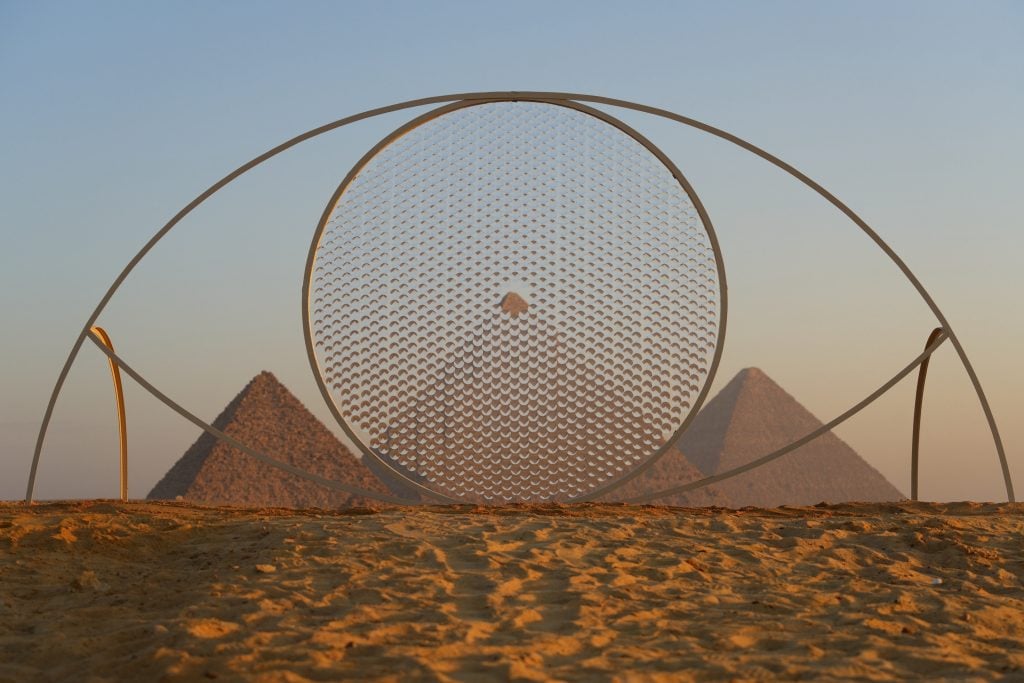
Federica Di Carlo, I See, I See. Courtesy of the artist and Art d’Egypte. Photography: © MO4.
This year’s exhibition brings together 12 international artists, including Chris Levine (UK), Federica Di Carlo (Italy), Jake Michael Singer (South Africa), Jean Boghossian (Belgium/Lebanon), Jean-Marie Appriou (France), Khaled Zaki (Egypt), and Luca Boffi (Italy). These artists are described as ‘modern-day archaeologists’ who aim to unearth narratives that connect the past within a contemporary context. The exhibition presents a range of mediums, including sculpture, installations, and digital works, creating a multi-sensory exploration of history and the human condition.
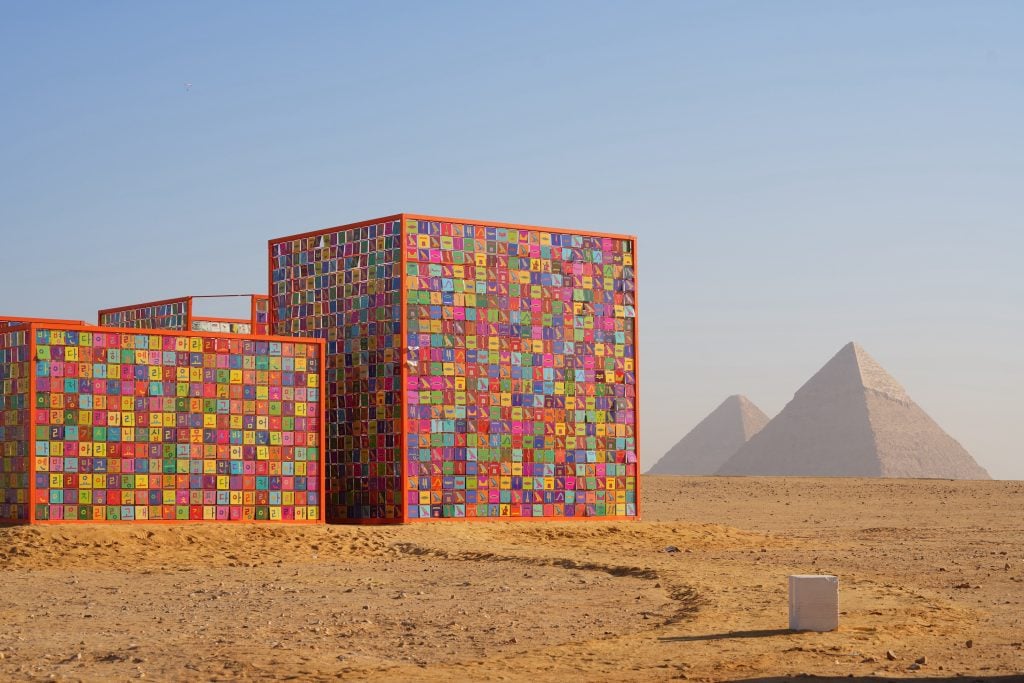
Ik-Joong Kang, Four Temples. Courtesy of the artist and Art d’Egypte. Photography: © MO4.
Korean-born, New York-based artist Ik Joong Kang presents a new work titled Four Temples, an installation that displays drawings from around the globe, especially from children and those facing political and social challenges, such as refugees from conflict zones and individuals displaced by the Korean War. The work uses architectural symbolism to promote global harmony, bridging connections across cultures. Similarly, Rashid Al Khalifa’s geometric maze installation features relics that emerge from the ground at varying angles, inviting viewers to traverse history and explore the patterns that bind humanity together. Each fragment is adorned with motifs inspired by the labyrinth diagram presented by 17th-century Jesuit scholar Athanasius Kircher in his book Turris Babel, written in 1679.
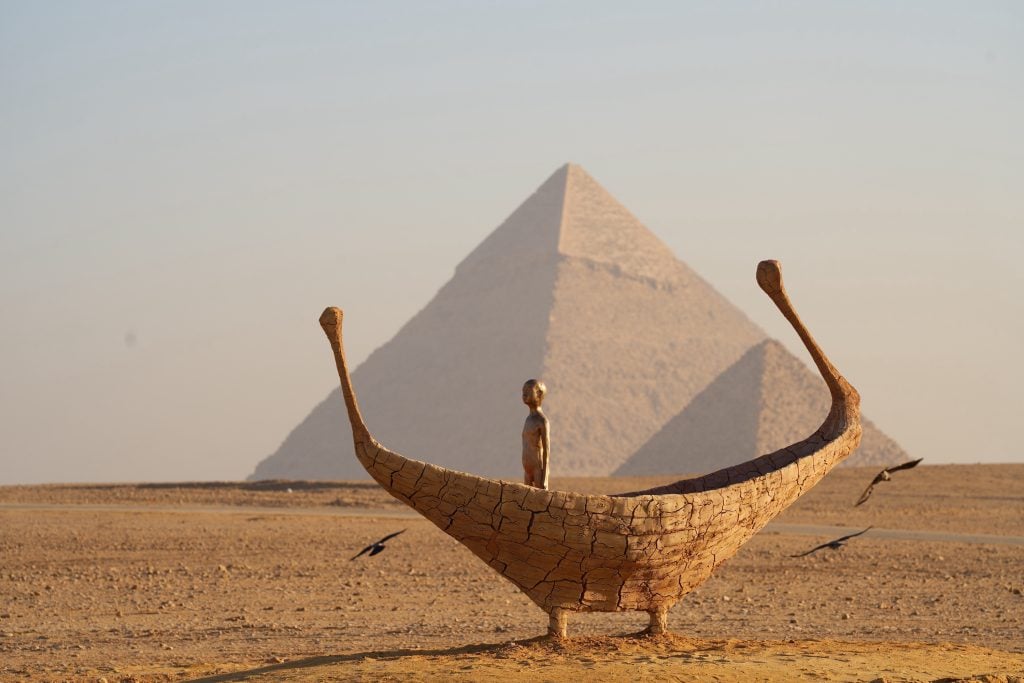
Jean-Marie Appriou, Vessel of Time. Courtesy of the artist and Art d’Egypte. Photography: © MO4.
At the heart of Forever Is Now lies a metaphor of excavation, not only of physical artifacts, but of stories, ideas, and emotions. This act of uncovering is both intellectual and emotional, revealing layers of meaning that challenge our understanding of the world. The exhibition emphasizes that history is not a static entity; rather, it is an ever-evolving narrative shaped by each generation’s contributions and perspectives. In the 2023 edition, artist Arne Quinze’s circular lupine sculpture offered an alternative viewpoint of the iconic pyramids, emphasizing the delicate interplay between nature and the legacy of ancient Egyptian culture.
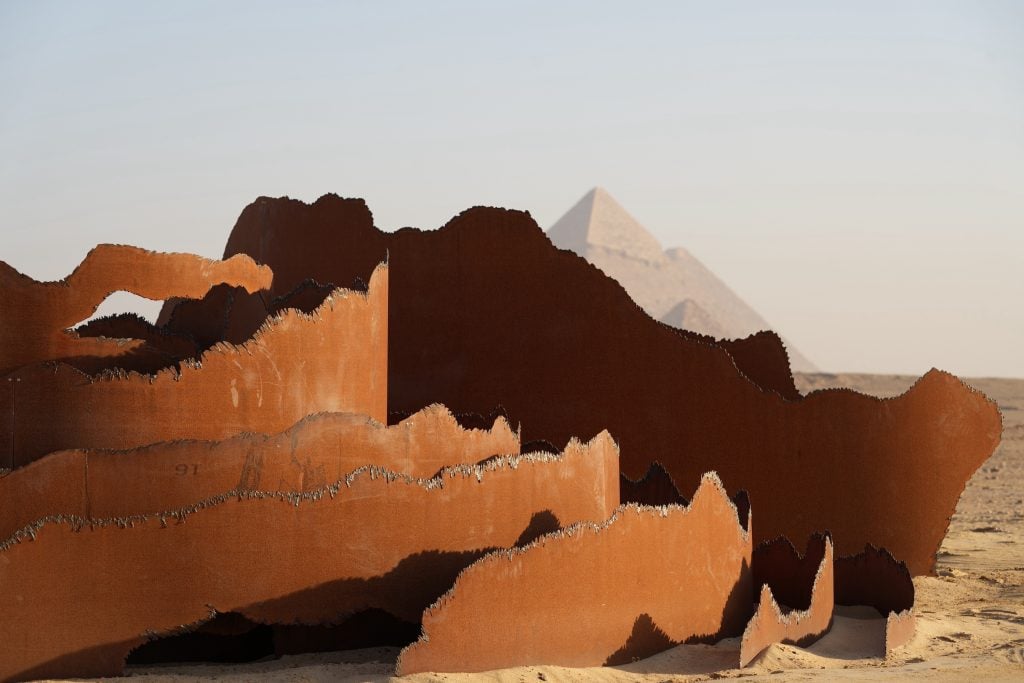
Jean Boghossian, Desert Waves. Courtesy of the artist and Art d’Egypte. Photography: © MO4.
By incorporating unconventional materials, artists challenge viewers to discover new ideas and perspectives. The interplay between excavation, interpretation, and creation lies at the heart of Forever Is Now, where the process of uncovering history becomes an emotional, intellectual, and participatory journey.
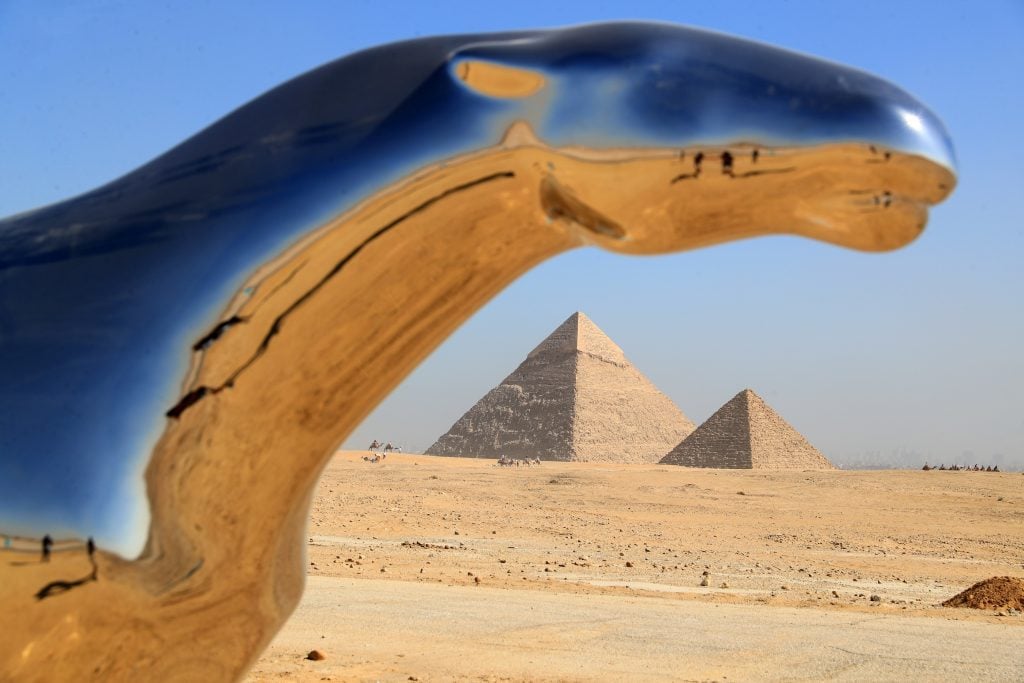
Khaled Zaki, The Race at “Forever Is Now” international art exhibition in Giza, Egypt, Oct. 24, 2024. Photo by Sui Xiankai/Xinhua via Getty Images.
Founded by Nadine Abdel Ghaffar, Art D’Egypte has emerged as a leading force in Egypt’s cultural landscape, evolving into CulturVator—a multidisciplinary platform that fosters international collaborations across art, design, and heritage. CulturVator’s mission is to build bridges between cultures, promoting cross-cultural exchanges that expand contemporary art’s reach while deepening global appreciation for Egypt’s rich artistic legacy.

Jake Michael Singer, we will meet again in the sky. Courtesy of the artist and Art d’Egypte. Photography: © MO4.
Forever Is Now actively encourages participation from its local communities, including craftspeople, students, and laborers, who are invited to participate in the exhibition, aligning with its commitment to inclusivity, sustainability, and site preservation. Local residents are encouraged to attend free lectures, panels, and community programs. This aligns with the vision set by UNESCO’s Convention on the Protection and Promotion of the Diversity of Cultural Expressions, whose patronage Art D’Egypte has operated under since 2019. Forever Is Now honors Egypt’s ancient heritage whilst also contributing to a contemporary artistic legacy that engages with history and looks forward to carving new cultural pathways.
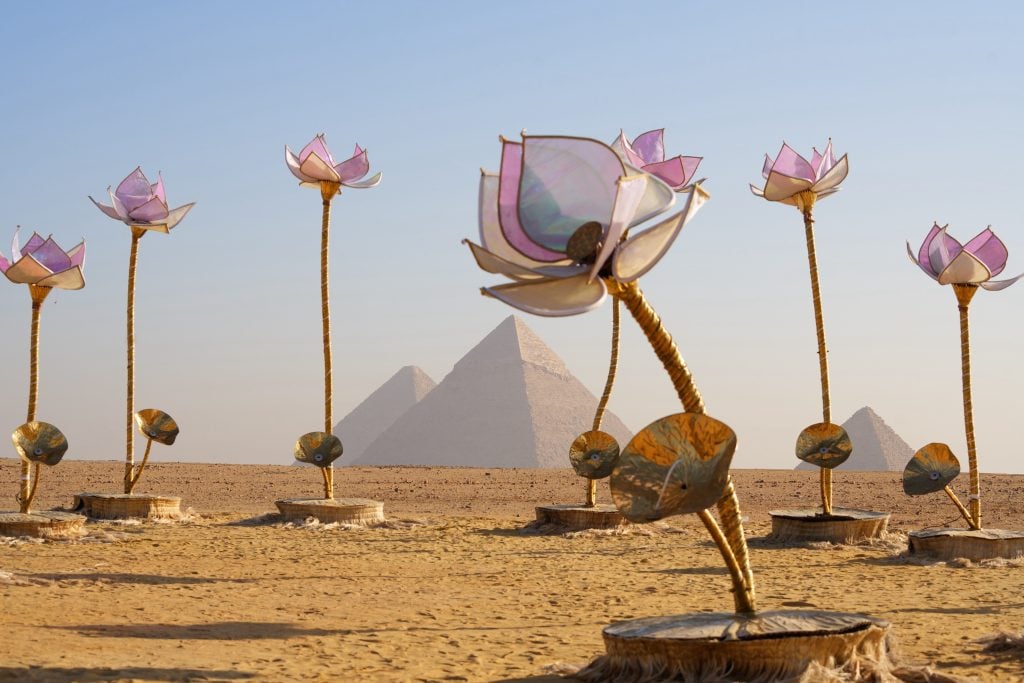
Shilo Shiv Suleman, Padma/Lotus. Courtesy of the artist and Art d’Egypte. Photography: © MO4.
Each installation reminds us that the past is not confined to textbooks or excavation sites, rather it lives on through art, culture, and the collective memory of humanity.

